Team
Tucson Veterinary Specialists is locally owned by veterinarians who truly care about our community. We live, work and enjoy all that Tucson has to offer. We are committed to providing the best specialty care possible through regularly attending and presenting at continuing education events, supporting clinical research through university collaborations and maintaining the latest veterinary technology for our practice.
Our Specialists

Cody Alcott, DVM
Diplomate of the American College of Veterinary Internal Medicine – Neurology and Large Animal Medicine
Veterinary medicine has been my passion since childhood and was solidified at my first job as a veterinary technician at age 16. The ultimate joy of helping people through the care of their pets was a calling. I am a graduate of Cal Poly Pomona and Iowa State University College of Veterinary Medicine (2004). Practicing small animal and equine practice at Grantline Veterinary Hospital in Sacramento California sparked a passion for service and an interest in specialty veterinary medicine. An invitation for an equine internal medicine residency was pursued at Iowa State University (2009) along with an adjunct professor position within the teaching hospital. Clinical research and a growing interest in neurology drove a residency in veterinary neurology (2014). A transition back to private practice in 2014 resulted in my arrival in Tucson with the penultimate goal of practice ownership in 2020.
I live in Tucson with my wife, Portia Alcott, who is also a practicing veterinarian in Tucson. We have been blessed with 3 beautiful children that keep everyday interesting with active involvement in dance, soccer and baseball. Our two dogs (Louie and Rosie), horses (Bud and Dolly) and a hamster (Buddy) remind us of why we enjoy veterinary medicine.
Cerebrospinal fluid markers of Coccidioidomycosis in dogs. Butkiewicz C, Alcott C, Shubitz L. In progress.
Use of an extended durotomy in dogs with absent deep pain perception following intervertebral disc herniation. Jeffery N (primary investigator, Texas A&M University), Alcott C (collaborator), published 2020.
Transcranial Magnetic Motor-evoked Potentials in CVSM (Wobbler) Horses. Alcott C (Primary Investigator), Jeffery N, Wong D, Sponseller B, Reed S. Grayson Jockey Club Research Foundation, 2012.
The use of ketamine and lidocaine continuous rate infusions to attenuate endotoxemia in the horse, abstract presented at the American College of Veterinary Internal Medicine Annual Forum 2010. Alcott C (Primary Investigator), Sponseller B, Wong D. ACVIM Foundation – Resident Grant, January 2009. Iowa State University Veterinary Medical Center, Ames, Iowa.
Continuous Renal Replacement Therapy in Horses. Wong D, Sponseller BA, Alcott C, Witty D Veterinary Clinical Sciences Seed Grant Fund, 2011.
The use of Polymixin B in healthy foals with experimental endotoxemia. Wong D, Sponseller BA, Alcott C. Veterinary Clinical Sciences Grant Fund, 2011.
Effects of regional hyperbaric oxygen therapy on wound healing dynamics in the equine distal limb. Tracey A, Alcott C. November, 2010.
Adrenocorticotropic hormone stimulation tests in healthy foals from birth to 12 weeks of age, co-investigator, April 2007. Iowa State University Veterinary Medical Center, Ames, Iowa.
Baseline plasma cortisol and ACTH concentrations and response to low-dose ACTH stimulation testing in ill foals, co-investigator, April 2007. Iowa State University Veterinary Medical Center, Ames, Iowa.
Merck/Merial Summer Scholarship, Johne’s disease research. Hostetter J, Department of Veterinary Pathology, Iowa State University, 2002. Abstract/Poster presentation Merck/Merial Summer Scholar Symposium, Purdue University School of Veterinary Medicine, West LaFayette, Indiana, 2002.
Gambino J, Beasley M, Heibert E, Jeffery N, Alcott C, Lafoon B. Verminous myelopathy secondary to aberrant Dirofilaria immitis migrans was detected in the cervical subarachnoid space of 4 dogs using MRI and CT. Vet Rad Ultrasound. Submitted August 2020.
Hepworth-Warren K, Wong DM, Ruby R, Alcott C. What is your Neurologic Diagnosis? Vertebral hemangiosarcoma in a horse. J Am Vet Med Assoc. July, 2020.
Jeffery ND, Mankin JM, Alcott CJ, Ito D, Boudreau E, Kerwin S, Krasnow M, Andruzzi M, Granger N. Extended durotomy as treatment for severe spinal cord injury following acute thoracolumbar disc herniation in dogs. Vet Surg. April 2020.
Davidson AP, Shubitz LF, Alcott CJ, Sykes JE. Selected Clinical Features of Coccidioidomycosis in Dogs. Med Mycol. 2019 Feb 1;57(Supplement_1):S67-S75.
Meren IL, Chavera JA, Alcott CJ, Barker AK, Jeffery ND. Shunt tube placement for amelioration of cerebrospinal fluid flow obstruction caused by spinal cord subarachnoid fibrosis in dogs.Vet Surg. 2017 Feb;46(2):289-296.
Jeffery ND, Barker AK, Alcott CJ, Levine JM, Meren I, Wengert J, Jergens AE, Suchodolski JS. The Association of Specific Constituents of the Fecal Microbiota with Immune-Mediated Brain Disease in Dogs. PLoS One. 2017 Jan 26;12(1).
Sponseller BA, Clark SK, Gilbertie J, Wong DM, Hepworth K, Wiechert S, Chandramani P, Sponseller BT, Alcott CJ, Bellaire B, Petersen AC, Jones DE. Macrophage effector responses of horses are influenced by expression of CD154. Vet Immunol Immunopathol. 2016 Nov 1;180:40-44.
Jeffery ND, Barker AK, Hu HZ, Alcott CJ, Kraus KH, Scanlin EM, Granger N, Levine JM. Factors associated with recovery from paraplegia in dogs with loss of pain perception in the pelvic limbs following intervertebral disk herniation. J Am Vet Med Assoc. 2016 Feb 15;248(4):386-94.
Wong DM, Gilmour L, Alcott C, Yaeger M, Wiechert S. What Is Your Diagnosis? Osteochondrotic lesions. J Am Vet Med Assoc. 2016 Jan 1;248(1):55-7.
Wong DM, Alcott CJ, Davis JL, Hepworth KL, Wulf L, Coetzee JH. Use of alprazolam to facilitate mare-foal bonding in an aggressive postparturient mare. J Vet Intern Med. 2015 Jan;29(1):414-6.
Wong DM, Davis JL, Alcott CJ, Hepworth-Warren KL, Galow-Kersh NL, Rice S, Coetzee JF. Pharmacokinetics and physiologic effects of alprazolam after a single oral dose in healthy mares. J Vet Pharmacol Ther. 2015 Jun;38(3):301-4.
Alcott CJ, Howard J, Wong D, Haynes J. Fibrinous Pericarditis and Cardiac Tamponade in a 3-week old Pony Foal. Equine Vet Educ, 2013, 25(7) 328-333.
Alcott C, Sponseller B, Wong D, Davis J, Soliman A, Wang C, Hsu W. Clinical and Immunomodulating Effects of Ketamine in Horses with Experimental Endotoxemia. J Vet Intern Med, 2011; 25(4):934-943.
Alcott C, Wong D, Sponseller BA. Attenuation of endotoxemia in horses with a ketamine continuous rate infusion. J Vet Intern Med (research abstract), 2010; 24(3):709-709.
Alcott C, Wong D. Anaphylaxis and systemic inflammatory response syndrome induced by inadvertent intravenous administration of mare’s milk in a neonatal foal. J Vet Emerg Crit Care, 20(6):616-622.
Alcott C, Wong D, Brockus C, Sponseller B. Review of Hemostasis in the Horse. Compendium Equine, 2009; 4(2): 78-89.
Hepworth K, Alcott C. Treatment and resolution of zilpaterol hydrochloride toxicity in a Quarter Horse gelding. Eq Vet Ed 2014; 26(2):81-85.
Wong DM, Sponseller BA, Alcott CJ, Agbedanu P, Wang C, Hsu WH. Effects of Intravenous Polymyxin B in Neonatal Foals with Experimental Endotoxemia. J Am Vet Med Assoc 2013;243:874-881.
Hepworth K, Wong D, Sponseller BA, Alcott C, Sponseller BS, Ben-Shlomo G, Whitley R. Survival of an adult Quarter Horse gelding following bacterial meningitis caused by Escherichia coli. Eq Vet Ed, published online January 2013.
Williams J, Riedesel E, Jeffery N, Alcott C. What is your diagnosis? Subdural Empyema in a German Shepherd Dog. J Am Vet Med Assoc. 2014 Jul 15;245(2):175-7.
Wong DM, Witty D, Alcott CJ, Sponseller BA, Wang C, Hepworth K. Continuous Renal Replacement Therapy in Horses. (2013) J Vet Intern Med;27:308-316.
Tracey AK, Alcott CJ, Schleining JA, Safayi S, Zaback PC, Hostetter JM, Reinertson EL. The effects of topical oxygen therapy on equine distal limb dermal wound healing. Can Vet J. 2014 Dec;55(12):1146-52.
Wong DM, Alcott CJ, Clark SK, Jones DE, Fisher PG, Sponseller BA. Alloimmune neonatal neutropenia in a Thoroughbred colt. J Vet Diagn Invest, 2011 Oct 6;1-8.
Wong DM, Alcott CJ, Wang C, Bornkamp JL, Young JL, Sponseller BA. Agreement between partial pressure of carbon dioxide and saturation of hemoglobin with oxygen values obtained by direct arterial blood measurements versus noninvasive methods in conscious healthy and ill foals. J Am Vet Med Assoc, 2011 Nov 15;239(10):1341-7.
Sponseller BA, Sponseller BT, Alcott CJ, Kline K, Hostetter J, Reinertson EL, Fales-Williams A. Syringohydromyelia in horses: 3 cases. Can Vet J 2011; 52:147–152.
Wong DM, Gross W, Madron M, Alcott CJ. What is your diagnosis? Palatal cyst. J Am Vet Med Assoc, 2011 Jan 15;238(2):157-8.
Wong DM, Alcott CJ, Wang C, Hay-Kraus B, Buchanan BR, Brockus CW. Physiologic effects of nasopharyngeal administration of supplemental oxygen at various flow rates in healthy neonatal foals. Am J Vet Res, 2010;71(9):1081-1088.
Wong D, Brockus C, Alcott C, Sponseller B. Modification of the Coagulation Cascade: Medications Available to the Equine Clinician. Compendium Equine 2009; 4(5):224-236.
Wong, David; Alcott, Cody; Sponseller, Brett; Young, Jessica; Sponseller, Beatrice. Impaired Intestinal Absorption of Glucose in 4 Foals with Lawsonia intracellularis Infection. J Vet Intern Med 2009; 23(4):940-944.
Wong DM, Vo DT, Alcott CJ, Stewart AJ, Peterson AD, Sponseller BA, Hsu WH. Adrenocorticotropic hormone stimulation tests in healthy foals from birth to 12 weeks of age. Can J Vet Res 2009; 73(1):65-72.
Wong DM, Vo DT, Alcott CJ, Peterson AD, Sponseller BA, Hsu WH. Baseline plasma cortisol and ACTH concentrations and response to low-dose ACTH stimulation testing in ill foals. J Am Vet Med Assoc 2009; 234(1):126-132.
Wong D, Vo D, Alcott C, Peterson A, Brockus C, Hsu W. Plasma Vasopressin Concentrations in Healthy Foals from Birth to 3 Months of Age. J Vet Intern Med 2008;22(6):1259-1261.
Wong D, Belgrave L, Williams K, Piero F, Alcott C, Bolin S, Marr C, Nolen-Walston R, Meyers R, Wilkins P. Multinodular pulmonary fibrosis in five horses. J Am Vet Med Assoc 2008; 232:898-905.
Seizure Management: Status Epilepticus and Epilepsy. Novel methods for addressing status epilepticus; cannabidiol use; when to start long-term antiepileptic drugs; therapeutic blood monitoring; multimodal antiepileptic protocols; antiepileptic drug interactions and adverse reactions. Southern Arizona Veterinary Medical Association, August 2019.
CNS Coccidioidomycosis: Clinical presentation, advanced imaging and treatment. ACVIM Annual Forum, Phoenix 2019.
CNS Coccidioidomycosis in Dogs. International Society for Companion Animal Infectious Disease Annual Meeting, Portland OR, August 2018.
CNS Coccidioidomycosis. Coccidioides Study Group Annual Meeting, Stanford University, August 2017.
Electrodiagnostics Review. ACVIM Annual Forum June 2017.
CNS Infectious Disease: Valley Fever. Southern Arizona Veterinary Medical Association, April, 2017.
Neuroimaging of CNS Infectious Disease. Esaote Neuroimaging Conference, Veterinary Specialty Center of Tucson, November 2017.
The Neurologic Examination: Review. Veterinary Specialty Center of Tucson. October 2017.
Epilepsy: What’s new and what works. Southern Arizona Veterinary Medical Association, March 2015.
IVDD and things that look like. Southern Arizona Veterinary Medical Association, April 2014.
The Neurologic Examination, Hypoxic Ischemic Encephalopathy, Equine Protozoal Myeloencephalitis, Equine Cervical Vertebral Stenotic Myelopathy. Oklahoma Veterinary Medical Association Annual meeting, January 2013.
Equine Neurology. Iowa Veterinary Medical Association Annual Meeting, September 2012.
Equine Protozoal Myeloencephalitis. Equine Health Symposium, Iowa State University, College of Veterinary Medicine, Ames, IA, 2011.
Attenuation of Endotoxemia in Horses with a Ketamine Continuous Rate Infusion. American College of Veterinary Internal Medicine Annual Forum. Research Abstract, Anaheim, CA, 2010.

Casey Birkel, DVM
Diplomate of the American College of Veterinary Internal Medicine – Neurology
Like so many of my colleagues, I was drawn to both animals and science from an early age, and was fortunate to be able to develop the skills and compassion to pursue this amazing career. I received my DVM degree from The Ohio State University in 2008. We had a neurology course during my first year of vet school, and everything just clicked. I loved that neurologists could practice both medicine and surgery, and in my humble opinion, nothing is cooler than the brain. After graduation, I completed a small animal rotating internship in medicine and surgery at the Southern California Veterinary Specialty Hospital in Irvine, California. I then went on to complete my residency in neurology and neurosurgery at the Animal Specialty Center in Yonkers, New York, and became board certified in 2014. I really enjoy the diversity and caseload of a busy private practice, and have spent the last 12 years working outside Chicago. Because I feel like a miracle worker helping paralyzed dogs walk again, I have a special interest in the surgical treatment of cervical and thoracolumbar disc disease.
I share my home with my husband, Jonny, who works in the film industry, and a very petite Great Dane named Sonya Blade. I am excited to be relocating to my husband’s hometown of Tucson to continue my practice. Outside of work, I try to read as many fiction books as possible, though we watch lots of movies as well. I also enjoy exploring new breweries and restaurants, and am looking forward to hitting the hiking trails in this area and taking advantage of the year round outdoor activities.

Bunita Eichelberger, DVM, MS
Diplomate of the American College of Veterinary Radiologists
“My path to veterinary medicine began after a long career as a respiratory therapist. By happenstance, I was introduced to veterinary medicine and immediately found my passion, volunteering in a research lab and in the large animal ICU. After this introduction, I started the process of applying to veterinary schools and was accepted into the veterinary medicine program at University of California, Davis. In addition to the rigorous demands of veterinary school, I was actively involved in many extracurricular activities, including accepting the role as class president for two years. During my veterinary training, I was recognized with many scholarships and awards for my academic achievements. My decision to pursue advanced training in diagnostic imaging occurred while a veterinary student at the University of California, Davis. Following veterinary school, I completed a one-year internship followed by a three-year diagnostic imaging residency at Colorado State University. My career as veterinary radiologist has spanned small and large animals in both private specialty practices and academia. I enjoy all aspects of diagnostic imaging with specific interests in cross-sectional computed tomography (CT), magnetic resonance imaging (MRI) and musculoskeletal imaging. My husband (helicopter pilot) and I actively enjoy the outdoors, traveling and reading and spending time with our precocious German Shorthaired Pointers; Lola, Passion and Rev and our horse, Balou.”
Park B, Marches S, Eichelberger B, Winter M, Pozzi A, Banks S. Quantifying dog meniscal volume at 1.5T and 3.0T MRI. Res Vet Sci 2020; 128: 236-241.
Schlacks S, Boozer T, Dial S, Eichelberger B. CT identifies pulmonary cryptococcosis in a domestic feline. Vet Radiol Ultrasound 2019; 1-4.
Parambeth JC, Simpler R, Ruoff C, Spaulding K, Bryan L, Arenas-Gamboa A, Clark BE, Eichelberger B. Canine gastro-oesophageal intussusception. Aust Vet Pract 2018; 48(1): 26-27.
Ruoff C, Eichelberger B, Pool R, Griffin J, Cummings K, Pozzi A, Padua A, Saunders B. The use of small field of view 3T MRI for identification of articular cartilage defects in the canine stifle: an ex vivo cadaveric study. Vet Radiol Ultrasound 2016; 57(6):601-610
Taylor A, Eichelberger B, Hodo C, Cooper J, Porter B. Imaging diagnosis: Spinal cord histiocytic sarcoma in a dog. Vet Radiol Ultrasound 2015; 56(2): E17-20.
Simpler RE, Kerwin SC, Eichelberger BM, Wall CR, Thompson JA, Padua A, Purdy D, Griffin IV JF. Evaluation of the WARP-turbo spin echo sequence for 3 tesla magnetic resonance imaging of stifle joints in dogs with stainless steel tibial plateau leveling osteotomy implants. Vet Radiol Ultrasound 2014; 55(4): 414-419.
Goodrich Z, Saunders WB, Eichelberger BM, Hulse D, Huggins, S, Fox DB, Norby B, Friedeck W, Callis H. Thoracic limb alignment in healthy Labrador Retrievers: evaluation of standing versus recumbent frontal plane radiography. Vet Surg. 2014; 43: 791-803.
Griffin JF, Cohen ND, Young BD, Eichelberger BM, Padua A, Purdy D, Levine JM. Thoracic and lumbar spinal cord diffusion tensor imaging in dogs. J Magn Reson Imaging 2013; 37 (3): 632-641.
Jackson E, Ashley C, Snowden K, Gresham V, Budke C, Eichelberger B, Taylor D. Performance and longevity of a novel intraosseous device in a goat (Capra hircus). JAALAS 2011; 50 (3): 365-379.
Eichelberger BM, Kraft SL, Halsey CHC, Park RD, Miller M, Klopp L. Imaging diagnosis-Magnetic resonance imaging findings of primary cerebral hemangioma. Vet Radiol Ultrasound 2011; 52 (2): 188-191.
Hoyt LJ, Greenberg MJ, MacPhail CM, Eichelberger BM, Marolf A, Kraft SL. Imaging diagnosis: Magnetic resonance imaging of an organizing abscess secondary to a retrobulbar grass awn. Vet Radiol Ultrasound 2009; 50(6):646-648.
Campbell J, Eichelberger B. Clinical Snapshot. Compendium: continuing education for veterinarians. November 2006; 28(11): 756-758
2020 – Ultrasound hands-on course. Kingman, Arizona
2019 – Diagnostic radiology from a radiologist’s perspective. Southern Arizona Veterinary Medical Association.
2017 – Veterinary MRI hands on training course. Tucson, Arizona.
2016 – The 8th Edition of MRI in Veterinary Medicine. Sicily, Italy.
2015 – Clinical case studies in neurology and radiology. VSCT CE Series. February 2015.
2014 – Ultrasound interactive lab. Southwest Veterinary Symposium. September 2014.
2012 – Advances in radiation therapy, CT and MRI for the small and large animal veterinarian. Texas Veterinary Medical Association.
2011 – Radiographic review of the thorax and contrast procedures. Louisiana Academy of Veterinary Practice.
2010 – Contrast studies of the gastrointestinal tract. Texas Veterinary Medical Association.
2010 – Radiographic interpretation of emergency cases. Emergency and Critical Care Conference. Texas A&M University.
2009 – Chronic nasal disease in dogs and cats. Massachusetts Veterinary Referral Hospital. Local continuing education seminar to general practitioners.
2008 – Can dynamic contrast enhanced MRI predict percent tumor necrosis in spontaneous canine osteosarcomas?
Oral presentation at CSU-Graduate Seminar, February
2007 – Can dynamic contrast enhanced MRI predict percent tumor necrosis in spontaneous canine osteosarcomas?
Oral presentation at American College of Veterinary Radiology annual meeting, November

Robert Sanders, DVM
Dr. Sanders is a board-certified veterinary cardiologist. He enjoys research and teaching veterinary students, interns and residents. He is interested in the diagnosis and treatment of patients with arrhythmias, congenital heart disease and acquired heart disease.
Dr. Sanders graduated from University of Michigan with a bachelor’s degree. He then attended the University of Arizona as a PhD student in the Ecology and Evolutionary Biology department until he decided to go to veterinary school. He graduated from Michigan State University College of Veterinary Medicine (MSU CVM) with a DVM in 2000.
After vet school he worked as a general practice veterinarian for about two years. He then completed a two-year research fellowship at MSU CVM. Following this, Dr. Sanders began a cardiology residency at Purdue University. After completing his residency, Dr. Sanders worked as a veterinary cardiologist in a busy private practice in Indianapolis. Since 2007 Dr. Sanders has been teaching and practicing in an academic setting.
In his free time he enjoys spending time with his wife, kids, two French Bulldogs and working on his old Toyota Land Cruiser. “
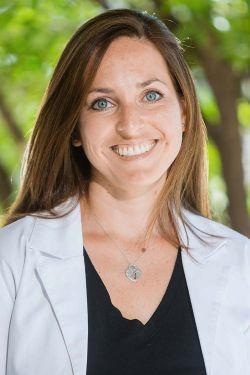
Brisa Hsieh, DVM
Diplomate of the American College of Veterinary Internal Medicine
Small Animal Internal Medicine
As soon as I could drive, I started working as a technician for our family friend, who was a veterinarian. I received my DVM from Kansas State University (2009) and after graduation, completed a one-year small animal internship at Veterinary Emergency and Referral Group in Brooklyn, NY. Having always enjoyed puzzles, I quickly developed an interest in the diagnostics and problem solving involved in internal medicine and pursued residency in small animal internal medicine at Gulf Coast Veterinary Specialists in Houston, TX (2013). I practiced as a small animal internist for several years, fulfilling my dream of being a veterinarian all while learning more about communication and the human animal bond. Once the U of A College of Veterinary Medicine opened (2020), I had the opportunity to help build the curriculum and teach veterinary medicine. I have developed a strong passion for teaching while helping others achieve their goal of becoming veterinarians.
Outside of work, I love spending time with my husband, Chris, and our son and daughter. We have two dogs (Hatch and Mochi), two cats (Bauer and Tacocat), a horse (Stormy), and two guinea pigs (Lucy and Koala). I also love horseback riding, dogs (especially Corgis!!), trying new restaurants, crosswords, games, and puzzles, and am always on the hunt for the perfect chai tea latte!
- Hsieh BM, Beets AK. Coughing in Small Animal Patients. Front. Vet. Sci. 2020 Jan 21;6:513. doi: 10.3389/fvets.2019.00513.
- Hsieh BM, Burney DP. Feline infectious peritonitis. Clin Brief. 2014; 12(2): 75–80.
- Hsieh BM, Cohen M, Levitzke B, Arndt JW. What’s Your Diagnosis? Cardiac myxosarcoma originating from the tricuspid valve in a dog. J Am Vet Med Assoc. Apr 2013, 242(8):1067-1068. doi: 10.2460/javma.242.8.1067.
- Laura Roberts, Daniel Johnson, Brisa Hsieh, Sallianne Schlacks. “The Collaborative Relationship Between Faculty and Instructional Designers” for the American Association of Veterinary Medical Colleges 2023 Veterinary Educator Symposium, Texas Tech University, Amarillo, Tx, October 28, 2023.
- Holly Bender, Jonathan Cox, Zach Boeder, Sharon Dial, Christopher Hauser, Brisa Hsieh, Daniel Johnson, Sallianne Schlacks, Lisa Viesselmann. “Workshop: How to get Started with Team-Based Learning (TBL): A Fun, Supportive, Hands-on, and Interactive Boot Camp” for the Western Veterinary Teaching Academy Veterinary Educator Teaching and Scholarship (VETS) 6th Biennial Summer Conference Pre-Conference Workshops, Oregon State University, Corvalis, OR, July 17, 2023.
- Brisa Hsieh and Sallianne Schlacks. Team Based Learning Session 11 in VETM 813: “Odie Has Itchy Ears and a Muddy Rear” for the Western Veterinary Teaching Academy Winter Meeting. University of Arizona, Oro Valley, AZ, January 20, 2023.
- Holly Bender, Jonathan Cox, Brisa Hsieh, Daniel Johnson, Anthony Martin, Kadian L. McIntosh, Sallianne Schlacks, Marcelo Schmidt, Peggy L. Schmidt. “Sharing Active Learning Materials Between Veterinary Schools. A 90-minute hands-on workshop” for AAVMC’s The Veterinary Educator Collaborative (VEC) Biannual Conference, Kansas State University, Manhattan, Kansas, June 30, 2022.
- Brisa Hsieh. “Cushing’s Disease” for Southern Arizona Veterinary Medical Association, Tucson, AZ, October 21, 2021.
- Brisa Hsieh and Janet Bailey. “Evaluation and Diagnostics of the Gastrointestinal Tract” for Southern Arizona Veterinary Medical Association, Tucson, AZ, April 18, 2018.
- Brisa Hsieh and Janet Bailey. “Common Canine Hepatopathies – Anatomy & Physiology, Differential Diagnostics Including Signalment, Blood Work Patterns & Diagnostics, Common Diseases & Treatment” for Southern Arizona Veterinary Medical Association, Tucson, AZ, January 18, 2017.
- Brisa Hsieh and Joanna Fry. “Clinical Signs and Diagnostics of Urinary Disorders” for Gulf Coast Veterinary Specialists Symposium, Houston, TX, 2011.
- Assistant Professor of Practice, University of Arizona College of Veterinary Medicine – 2020-present
- VETM 813 – Companion Animal: Advanced Clinical Management – 2021-present
- VETM 810 – Foundations – 2022-present
- SEL 013 – Small Animal Internal Medicine Selective – 2023-present
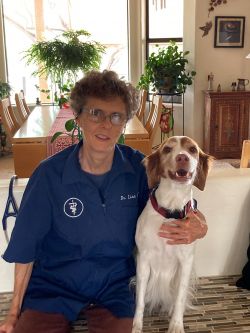
Lisa Shubitz, DVM
Research Scientist
Associate Research Professor, ACBS
Research Interest:
Dr. Shubitz is a Research Scientist at The Valley Fever Center for Excellence. Her research focus includes developing a vaccine for Valley fever, studying the epidemiology of the disease in canines, the ecological distribution of the fungus in Southern Arizona and interactions between the host (both animal and human) and the fungus that causes Valley fever, using animal models.
Contact Information:
The University of Arizona College of Medicine
Medical Research Building
1656 E. Mabel Street, PO Box 245215
Tucson, AZ 85724
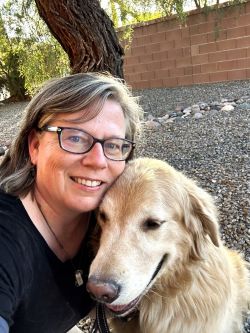
Christine Butkiewicz
Associate Research Scientist
I grew up in a one-dog-only kind of household in Chicago, but I always knew that as an adult my own home would be loud and furry. This, combined with my interest in science, made my path clear. After completing my undergraduate work in forensic science at Michigan State University, I moved to Massachusetts to attend the Cummings School of Veterinary Medicine at Tufts University. Upon graduation I returned to Chicago for a year before relocating to Tucson, where I received a rapid education on rattlesnakes, javelinas, and Valley Fever.
My husband and I share our home with our two nearly grown human children, some chickens, and our three dogs, Toby, Mina, and Lizzie.
Powell DA, Hsu AP, Butkiewicz CD, Trinh HT, Frelinger JA, Holland SM, Galgiani JN, and Shubitz LF. Vaccine protection of mice with primary immunodeficiencies against disseminated coccidioidomycosis. Front Cell Infect Microbiol 2022.
Butkiewicz CD, Alcott CJ, Renschler J, Wheat LJ, Shubitz LF. The utility of Coccidioides antigen and antibody testing in cerebrospinal fluid in the diagnosis of canine central nervous system coccidioidomycosis. Am J Vet Res 2021; 83(1): 59-63.
Shubitz LF, Schlacks S, Vishkautsan P, Butkiewicz CD, Worthing KA. Posaconazole treatment of refractory coccidioidomycosis in dogs. J Vet Intern Med 2021; 35(6): 2772-2777.
Butkiewicz CD, Shubitz LF, Nix DE. A preliminary study of the plasma concentrations of orally administered fluconazole in alpacas (Vicugna pacos). J Vet Pharmacol and Ther 2022; 45(1): 99-106.
Schlacks S, Vishkautsan P, Butkiewicz C, & Shubitz L. Evaluation of a commercially available, point-of-care Coccidioides antibody lateral flow assay to aid in rapid diagnosis of coccidioidomycosis in dogs. Med Mycol 2019; 58(3):328-332.
Arbona N, Butkiewicz CD, Keyes M, & Shubitz LF. Clinical features of cats diagnosed with coccidioidomycosis in Arizona, 2004 – 2018. J Fel Med Surg 2020; 20(2):129-137.
Butkiewicz CD & Shubitz LF. Coccidioidomycosis in alpacas in the southwestern United States. Transbound Emerg Dis 2019; 66: 807-812.
Butkiewicz CD, Shubitz LF, & Dial SM. Risk factors associated with Coccidioides infection in dogs. J Am Vet Med Assoc 2005; 226(11): 1851-1854.
Shubitz LF, Butkiewicz CD, Dial SM, & Lindan CP. Incidence of Coccidioides infection among dogs residing in a region in which the organism is endemic. J Am Vet Med Assoc 2005; 226(11): 1846-1850.
Our Staff

Marissa Angulo, CVT
In elementary school, when asked what I wanted to do when I grow up, I answered “drive around in a van, pick up strays, fix them and find them homes.” While I don’t do that exactly, I have fulfilled my dream of helping animals!
I started pre-vet at the University of Arizona, and while taking prerequisite classes at Pima Community College discovered the Veterinary Technician program. This is where I belonged.
While in the program, I began working as a veterinary assistant at a local general practice and stayed there until I graduated the program in 2007. Once I graduated and became certified, I applied to be an emergency technician at the Veterinary Specialty Center of Tucson. A passion for emergency medicine was born- and I loved every second of it. I worked as an ER/ICU technician for over two years when I decided to pursue another dream of mine… moving to New York City.
I started working as an ER/ICU technician at NYC Veterinary Specialists. After being there for several months, I was approached to join the Neurology team- again, always wanting to learn something new and advance my skills, I thought I would give it a shot and I haven’t looked back. I worked with a great team for six years and eventually became the lead technician of our department. While in New York, I helped to start a fund to help those who couldn’t afford surgery for their pets called the “Walk Again Fund.” It was great to be able to help those families.
I moved back to Arizona at the end of 2015 and the opportunity arose to join the Neurology service at a local specialty hospital in the beginning of 2016. It was a wonderful opportunity to pursue my passion in my hometown. I was able to work with rotating Neurologists and learned so much from each of them. Neurology is complex and exciting and I love building relationships with my patients and clients. I am thrilled to be a part of the first hospital in Tucson exclusively dedicated to Neurology and to have the opportunity to help even more pets.
In my spare time, I enjoy walking Tumamoc, photography and hanging with my pack.
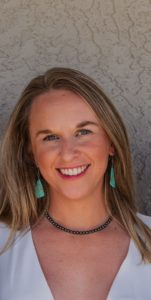
Ashley Eikrem
Ever since I was young, I have had a passion for animals big and small. I was (and still am!) that girl that would make friends with animals wherever we went. Luckily, I was able to turn my excitement and love for animals into a career I am so passionate about.
I have worked in Veterinary Medicine for 11 years, with my focus being on client relations/customer service. I love helping people and their pets. I take great pride in providing excellent customer service to our clients and the veterinary community. I look forward to helping many families and assisting with the referral process for veterinarians in Southern Arizona.
In my spare time, I love to be outdoors with my husband, 2 daughters and our 2 dogs. When my youngest daughter is not playing softball, we like to soak up as much of this beautiful Arizona weather as we can at the lake or camping.
Casey Shadd

I was born and raised in Yuma Arizona and have always had a large number of pets growing up. I have tremendous love and compassion for all animals. I’ve always been fascinated with the animal science field since childhood. I studied and performed hospital management for 9 years since starting in the Veterinary field in 2004. Recently I relocated to Tucson Arizona and have developed a strong passion for Neuro science. My four legged children consist of 3 dogs, 1 cat and 6 horses. I spend the majority of my free time with my horses where I have competed in barrel racing and team roping since I was a child.
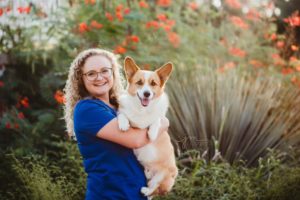
Allison Gauthier, CVT
Since the third grade I have known I wanted to work with animals. I graduated from Pima Community College in 2020 with an Associates degree in veterinary technology and then obtained my certification to become a CVT. I worked at a local general practice for a couple of years before deciding to advance my career in speciality medicine here at TVS. I am a Tucson native and enjoy going on adventures with my 3 dogs, Cooper, Kumar and Oakley in my spare time. I also have a rabbit named Chubbs who rounds out my pack. I am currently pursuing a bachelor’s degree in Veterinary Technology through the University of Missouri and am excited to learn more about Valley Fever since we are joining forces with doctors Shubitz and Butkiewicz. A fun fact about me is that I love Corgis!
Savanna Cooper
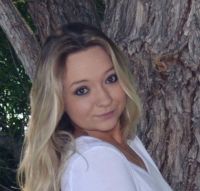
I grew up on a ranch right here in Tucson, Ariz. surrounded by horses, dogs, cats, and more, and knew from a young age that my passion was to work with animals. I acquired my Certificate of Veterinary Assistance directly out of high school, and completed an internship at a local Tucson emergency hospital for over a year. I also completed a 4 month externship at Pima Animal Care Centers clinic, where I was first introduced to fostering.
I am currently working on receiving my Bachelors at the University of Arizona with a major in Veterinary Science and a minor in Marine Science. I plan on furthering my career in Veterinary Medicine by going to vet school and acquiring my DVM so I can furthermore do what I love most. While working at Tucson Veterinary Specialists, I foster orphaned kittens and medical/hospice cats through two local organizations in my free time.
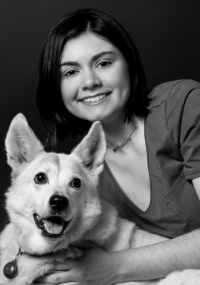
My love for animals is innate, though I did not always believe I had the stomach to work with them in a medical capacity. It was not until I started working at a general practice clinic at the front desk, did I realize I could handle that side of things. Once that dam broke I went full steam ahead into learning what I could to become a technician.
Four years later I am still learning every day on how I can improve to help our furry companions. I owe much of my continued passion to my own dog, Chloe, who is the first animal I’ve ever had. She has taught me a lot about how each animal is an individual. It is a privilege to be able to care for other pets the same way I would for her.